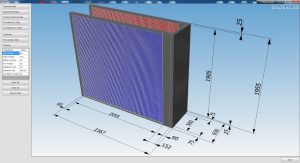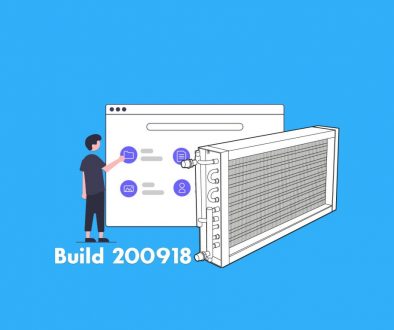How to calculate Wrap Around Heat Pipes
 In tropical areas, high humidity is combined with high temperatures. From an energetical point of view, traditional air conditioning equipment is not very efficient. Using wrap around heat pipes or a monoflat heat pipes, interposed between the main cooling coil, has many advantages, such as increased dehumidification capacity and reduction of the energy required at no additional cost.
In tropical areas, high humidity is combined with high temperatures. From an energetical point of view, traditional air conditioning equipment is not very efficient. Using wrap around heat pipes or a monoflat heat pipes, interposed between the main cooling coil, has many advantages, such as increased dehumidification capacity and reduction of the energy required at no additional cost.
There are countless reasons that aim looking for eco-compatible systems. May be membership in LEED certifications, Eurovent, it can be the respect of international standards for environmental protection. A recent analysis has compared in terms of recovered energy, absorption and restrictions on the main recovery systems in compliance with the ASHRAE Standard 90.1 applied in humid climates.
The Standard states that the minimum recovery value in terms of enthalpy is at least 50%. The systems that best meet this demand are static heat recovery systems, enthalpy wheels and wrap around heat pipes. Static heat recovery systems have the disadvantage that, while they have no mechanical parts, they do not recover the latent heat, as do the enthalpy wheels. These latter have the advantage of recovering the latent heat, but have mechanical parts that consume energy for the movement of the wheel.
 Wrap around heat pipes has no moving parts, but the movement of the fluid, inside the tubes, is given by a pressure difference given by the phase change in the tube. The tube, in fact, has the coexistence of a state of evaporation and one of condensation: a side heat and other cools the fluid flowing through it. There are various uses of the “Heat Pipe”: you can have a “coil” configuration i.e. the side that condenses is next to the one that cools down; they may be two split coils, or you can have the wrap around heat pipe.
Wrap around heat pipes has no moving parts, but the movement of the fluid, inside the tubes, is given by a pressure difference given by the phase change in the tube. The tube, in fact, has the coexistence of a state of evaporation and one of condensation: a side heat and other cools the fluid flowing through it. There are various uses of the “Heat Pipe”: you can have a “coil” configuration i.e. the side that condenses is next to the one that cools down; they may be two split coils, or you can have the wrap around heat pipe.
This system allows to have, on the same air flow, the heat recovery given by the dehumidification. The wrap around heat pipe proves to be the more efficient system in terms of energy saving electrical absorptions, having no subsidiary parts that absorb energy.
Calculating such equipment can be very difficult. That is why Unilab Srl has developed a software called “Dehumidifier Heat Pipes” that is very intuitive and easy to use. DHP enables you to enter the exchanger’s dimensional data, the air conditions and performs a rating calculation in minutes. After that, you can also create a printed report containing all the heat exchanger’s data that has been calculated, and the psychrometric chart of the treatment. You can also export a 1:1 scale DWG file with the pattern of the wrap around heat pipe with its actual size.
References
-
A. John, P.E., D. Elseberry – Wrap Around Heat Pipes in Humid Climates – ASHRAE JOURNAL November 2016







